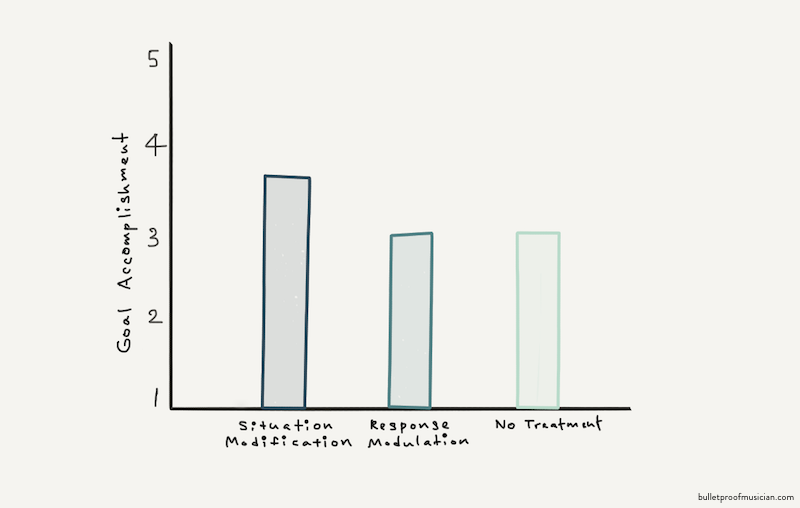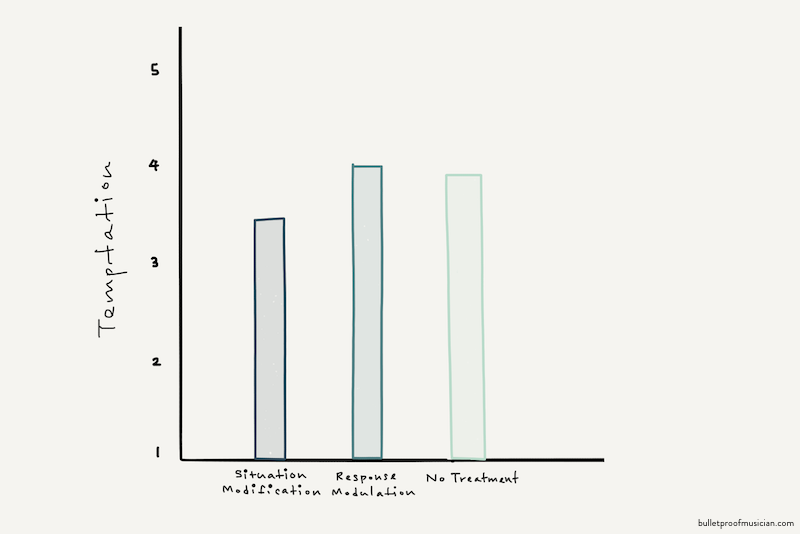
If you watched any TV during the 90’s, you will probably remember the Lay’s potato chip challenge.
Their catchphrase was “Betcha can’t eat just one.” And as those diabolical marketing geniuses predicted, I did find it awfully hard to eat just one and call it a day – and I don’t even particularly like potato chips.
Indeed, we all know that many of the things we want most dearly in the long-term (e.g. becoming a great clarinetist, publishing a book, having healthy teeth) require effortful activities in the immediate present that aren’t necessarily fun (e.g. practicing, writing, flossing).
So if we’re going to make meaningful progress towards our long-term goals, we have to find a way to exert some self-control and put the desires of future us above those of present-day us.
But if we’ve learned nothing else from decades of failed New Years’ resolutions, it’s that self-control is not exactly our forte. Sure, we’re great at starting things, but sticking with things is a different story.
But what if that’s because we’ve been going about it the wrong way?
What if there were an easier, less painful, and more effective way to get ourselves to do the right thing?
Brute-force method of self-control
The old-school way of getting ourselves to do the “right” thing is to will ourselves to do it.
To look that piping-hot plate of Skyline chili straight in the eye, say “Is that the best you got?”, and walk away with a quinoa/avocado/grilled salmon salad instead.
Doable, in theory. But…argh…!
Strategic “process” model of self-control
Fortunately, a growing literature of research on self-control suggests that this is not the only strategy we can employ. And that other strategies may not only be more effective, but easier and less painful too.
University of Pennsylvania researcher Angela Duckworth and colleagues have come up with a model of self-control which suggests that our impulses don’t just pop up out of nowhere, but grow stronger (or weaker) through 4 stages. For instance,
- Stage 1: Situation (e.g. walk into the kitchen)
- Stage 2: Attention (e.g. notice the box of chewy chocolate chip cookies sitting on the counter)
- Stage 3: Appraisal (e.g. what the heck, it’s Friday and I feel like a cookie)
- Stage 4: Response (e.g. eat dozen cookies)
Or, on a more positive note:
- Stage 1: Situation (e.g. walk into apartment)
- Stage 2: Attention (e.g. notice the practice area set up nicely)
- Stage 3: Appraisal (e.g. Hmmm…would be nicer to finish practicing before dinner, rather than after)
- Stage 4: Response (e.g. practice now; enjoy rest of evening off)
One of this model’s predictions, is that we’ll have greater success doing the right thing if we nip temptation in the bud and take action in the earlier stages, rather than waiting until the later stages when temptation is likely to overwhelm our better judgment.
Five categories of self-control strategies
The model also outlines not one, but five categories of self-control strategies that we can use:
- Situation selection: Preparing for a big audition in a month and want to practice? Hang out with the subgroup of your friends who go to bed early, wake up early, and practice diligently.
- Situation modification: Trying to practice effectively? Turn your phone off.
- Attentional deployment: Tempted to watch TV? Practice in a room with no TV in it. Or at least not in your line of sight.
- Cognitive change: Think about the pros of practicing now vs. the costs of practicing later or not at all.
- Response modulation: Practice through sheer force of will, even though every fiber of your being is screaming “Must see Game of Thrones…RIGHT NOW!!!”
I’m all about finding the easiest way to do the most challenging thing, so this sounds pretty appealing. Let’s take a look at how the model works in some tests with real students.
Study time!
159 undergraduate students were recruited for a study and randomly assigned to one of three groups. All reported the number of hours they studied on a typical day, and were also asked to set a study-related goal for the week (like “study French for one hour each night before [they] sleep” or “not go on Facebook while completing [their] research paper”).
The situation modification group was given information about the benefits of “removing temptations from sight rather than trying to resist them directly” and told to make any adjustments to their study environment that they thought would help to minimize any tempting distractions (like turning off their phone, installing apps to restrict access to Facebook, etc.).
The response modulation group was told that “people can actually strengthen their self-control muscle with repeated practice that consists of actively resisting immediate temptations (rather than simply avoiding them)” and asked to practice using their willpower to stay on task and resist any temptations that might present themselves.
The control group didn’t get any tips on how to stick to their study goals.
How’d they do?
After a week, the students reported in on a) how well they did with their study goal (1=extremely poorly to 5=extremely well), and b) how much temptation they experienced (1=not at all tempted to 5=extremely tempted).

As expected, students in the situation modification (i.e. minimize temptations) group were more likely to achieve their study goals than those in the response modification (willpower) and control groups. Which is cool, but what’s more interesting to me, is why they were successful.

Admittedly, this doesn’t explain all of it, but some deeper statistical analyses revealed that part of the reason why these students were more successful in achieving their study goals is that they experienced less temptation in the first place. In other words, they made things easier for themselves, by relying less on willpower, and more on what some have called “environmental structuring.”
Like trying to stop a panda from rolling downhill, the most effective time to intervene, is before the little guy gets too close to the edge.
Take action
There are times when it can be very valuable to practice focusing past distractions like Facebook, Netflix, and a plate of freshly-baked chocolate chip cookies. But not every day.
So on a day-to-day basis, what are some ways to restructure your environment to reduce temptations and make it easier to do the “right” thing?
Take a moment to jot down a list of 5 easy-to-implement ideas, and give it a try.
Noa Kageyama, Ph.D.
